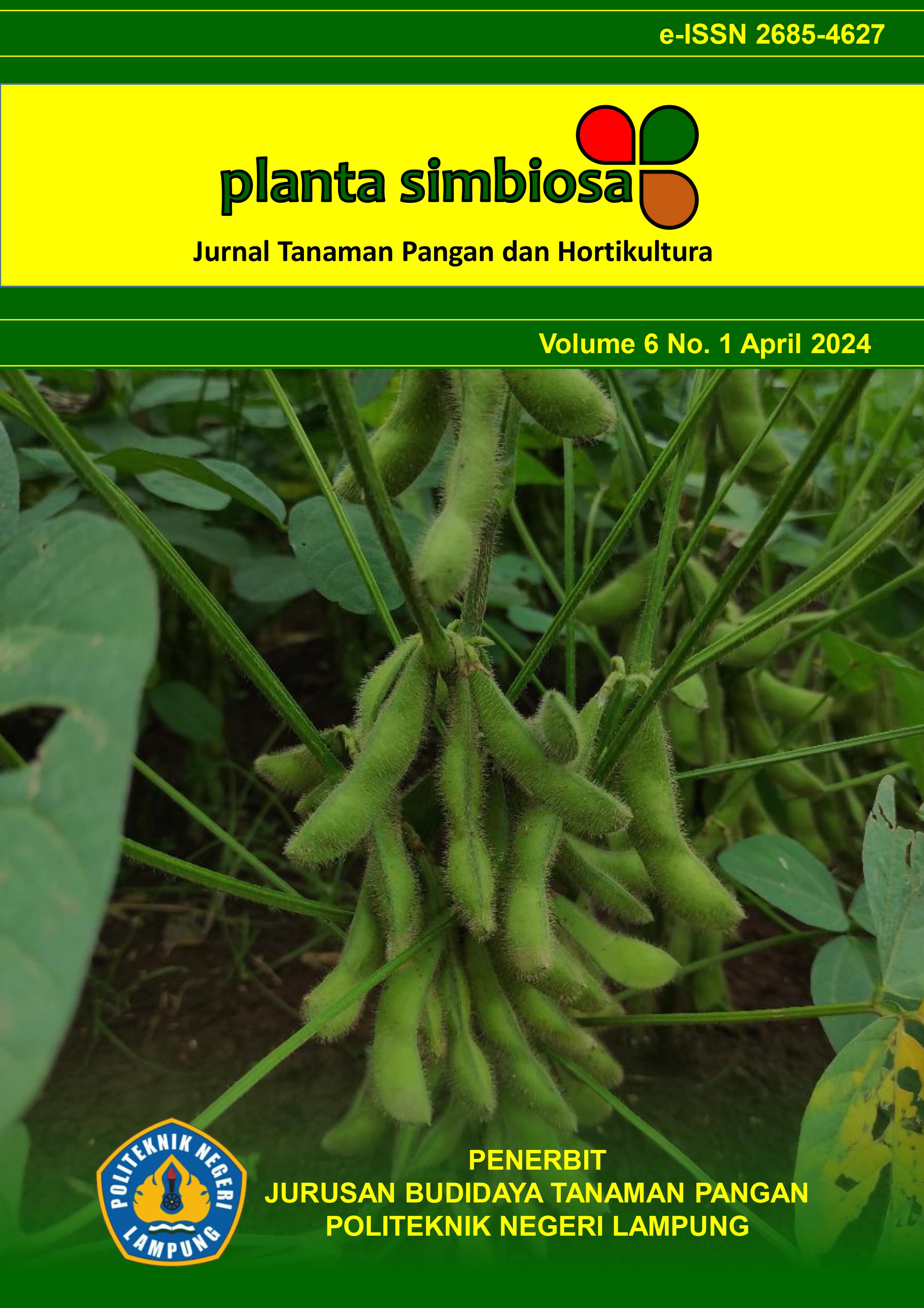Effect of Paclobutrazol Concentration and pruning on Growth and Yield of Cherry Tomato (Lycopersicum esculentum var. Cerasiforme) Plants
DOI:
https://doi.org/10.25181/jplantasimbiosa.v6i1.3558Abstract
This study aimed to examine the effect of paclobutrazol concentration and side shoots pruning on the growth and yield of cherry tomato plants. This study used a factorial Complete Randomized Design (RAL) with 2 factors and 3 replicates. The first factor was the concentration of paklobutrazol consisted of 4 levels, namely 0 ppm (P0), 75 ppm (P1), 150 ppm (P2), and 225 ppm (P3). The second factor was side shoots pruning consisted of 2 levels, namely without pruning (M1) and with pruning (M2). Parameters observed include plant height, number of leaves, leaf area, chlorophyll and carotenoid content, flowering time, number of fruits, fruit weight, fruit diameter, fruit length, flesh thickness, fresh weight of plant biomass, dry weight of plant biomass, and harvest index. The data were statistically analyzed by analysis of variance (ANOVA), then continued with the 5% Honest Significant Difference (HSD).The results showed that paclobutrazol treatment had a significant effect on plant height parameters, number of leaves, leaf area, flowering time, number of fruits, fruit weight, fruit diameter, fruit length, thickness of fruit flesh, wet weight of plants, dry weight of plants, and harvest index. Pruning treatment has a noticeable effect on the parameters of plant height and number of leaves. The interaction between paklobutrazol concentration treatment and pruning is in the parameter of leaf count.Downloads
Download data is not yet available.
Published
2024-04-29
How to Cite
Sakanti, P. D., Karno, K., & Rosyida, R. (2024). Effect of Paclobutrazol Concentration and pruning on Growth and Yield of Cherry Tomato (Lycopersicum esculentum var. Cerasiforme) Plants. J-Plantasimbiosa, 6(1), 74-90. https://doi.org/10.25181/jplantasimbiosa.v6i1.3558
Issue
Section
Artikel








